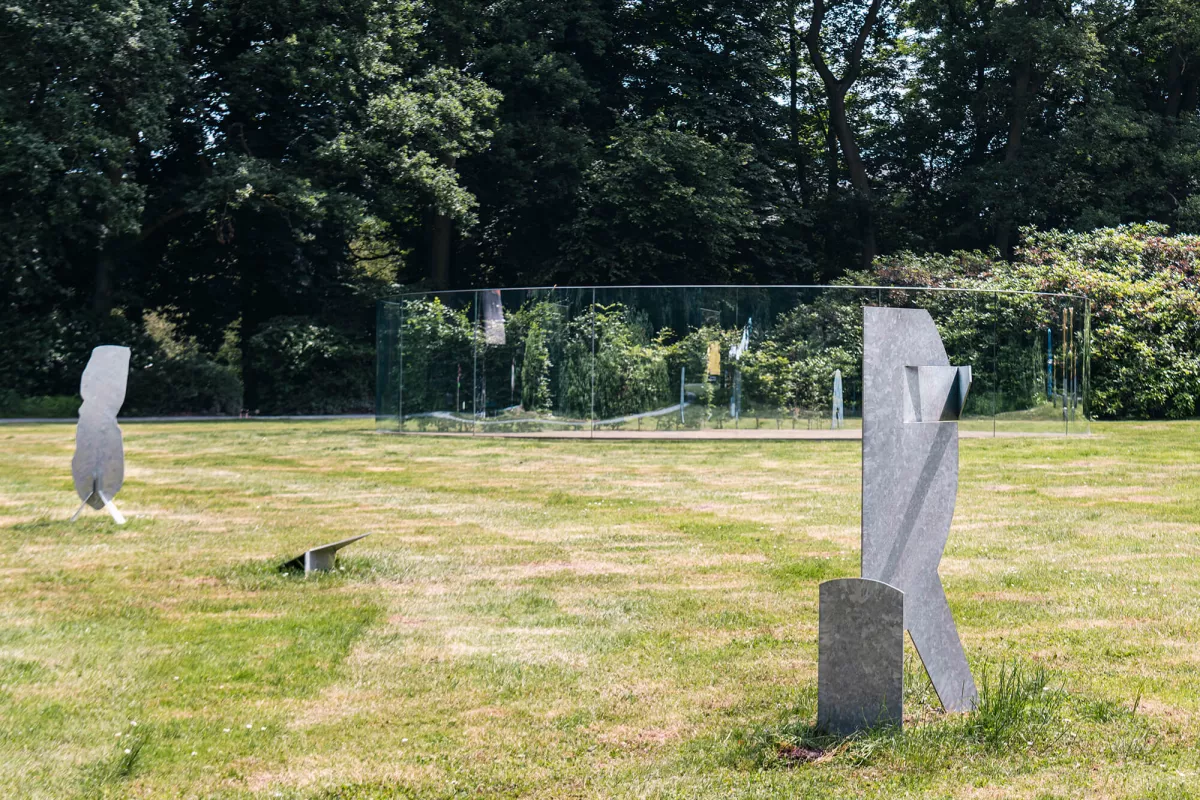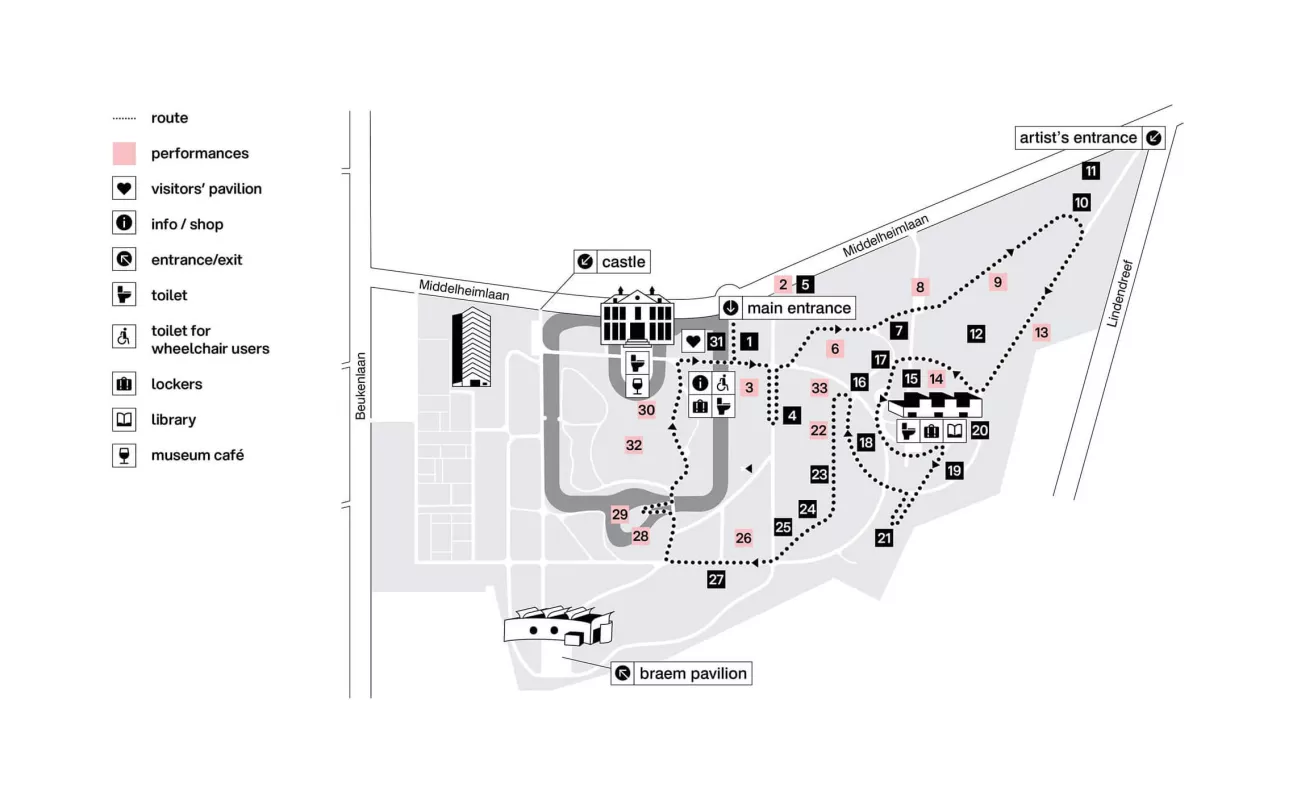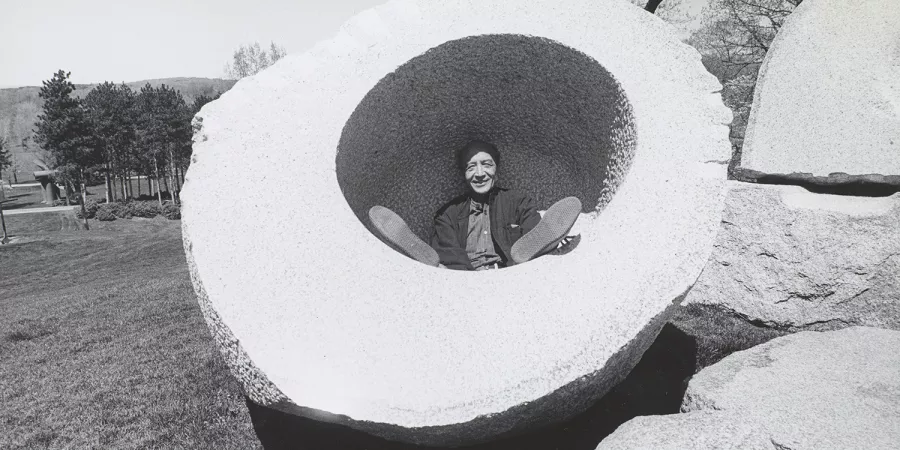
Isamu Noguchi, Fat Dancer - foto © Léonard Pongo
More about this work
In the final years of his life, Isamu Noguchi explored industrial techniques. He made sculptures from materials that you see in the public domain, such as fences and drainpipes. Large steel plates were carefully folded or cut, as if he were making something in origami. In this way, mass production and handiwork were combined.
The work that you see recalls memories of the California landscape where he did his training. He only added the titles afterwards. These refer to his vision of sculpture: tools with which to watch what goes on around the artwork. After all, for Noguchi a work of art is never done. The making process goes on when someone looks and the work interacts with the context.
As from the 1920s, Noguchi developed a close friendship and collaboration with choreographer and dancer Martha Graham, the founder of modern dance. This inspired him to make utensils and objects that organise the space. Using the dance sets he could release his sculptures from the strict laws governing the fine arts. Noguchi’s interest in the relationship between work and context is still shared by many performance artists.
Number 23 on the map.
Park map and walking route

